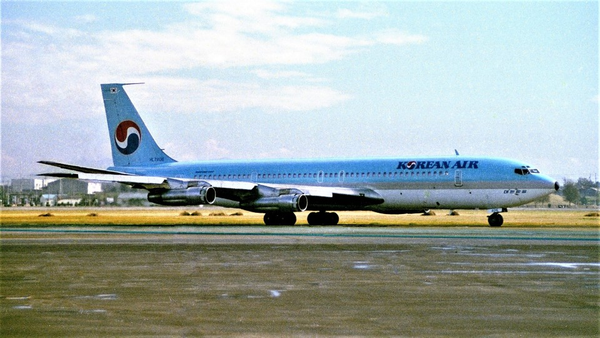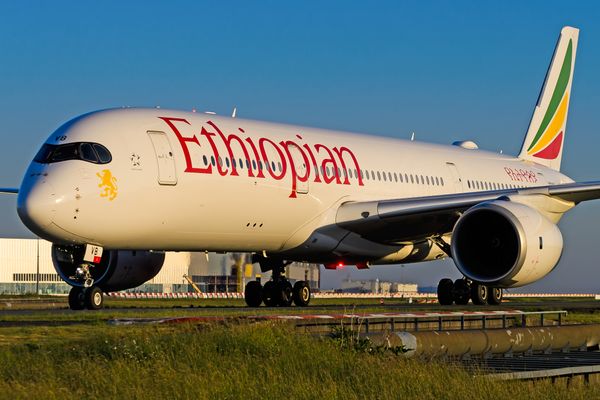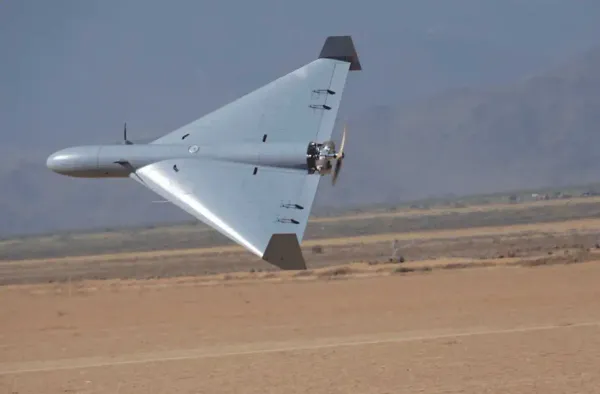According to the U.S. Department of Energy, sustainable aviation fuel (SAF) is an alternative fuel made from non-petroleum feedstocks that reduce emissions from air transportation. Depending on feedstock and fuel production, it can be blended at different levels within limits between 10 and 50 percent.
Since aviation contributes 12% of the worlds transportation-related carbon dioxide emissions, many airlines have signed agreements to reduce their carbon dioxide emissions by investing in and using sustainable aviation fuel.

The Benefits of SAF
Besides reducing carbon dioxide emissions, shifting to sustainable aviation fuel provides several other benefits for the aviation industry. Growing, sourcing, and producing these alternative fuels creates new jobs and increases economic output. Since the United States is the largest producer of biofuels in the world, the new jobs created for the production of SAF fuel include those in the farming community, feedstock production, construction and manufacturing for SAF biorefineries, and jobs within the aviation industry. Farmers can also earn additional revenue outside of peak season by growing and providing feedstock annually for SAF users while also improving their own soil quality.
Aircraft engine efficiency and environmental pollution also improve with the emerging SAF market. Biomass crops used to help produce SAF controls (part of the fuel) help stop erosion and can improve overall water quality and quantity in the places these crops are grown.
Also, since SAF can be produced by wet wastes, it reduces pollution pressures on watersheds along with keeping methane out of our atmosphere. For reference, methane is the most potent greenhouse gas. As for aircraft performance, SAF usually allows aircraft engines to burn more cleanly, leading to lower emissions of pollutants and decreased contrail productions, both of which exacerbate climate change impacts.
All of this seems great, but is SAF fuel viable?
Despite significant investment in SAF along with an IRS report claiming that SAF is on track to replace kerosene within the required timeframe to avoid a climate disaster, there is no currently scalable or realistic alternative to our standard kerosene-based jet fuels. The report by the Institute for Policy Studies argues that while it is a small possibility, one should be skeptical of the IRS reports.
In the United States, President Biden has set an ambitious target of 3 billion gallons of SAF to be produced by 2030, which would cut aviation industry emissions by around 20%. There is plenty of taxpayer support for SAF, which was demonstrated by Congress's authorization of expanded funding for SAF development. Also, a piece of Biden's Inflation Reduction Act gives tax breaks to companies and entities for producing SAF.
Despite financial incentives and support, Chuck Collins, a co-author of the Institute for Policy Studies report, argues that SAF is currently unscalable. He claims that "to bring these fuels to the scales needed would require massive subsidies, the trade-offs would unacceptable and would take resources away from more urgent decarbonization priorities."
The current target for SAF production requires an 18,887% increase in production based on 2022 production levels, further emphasizing how unscalable SAF is right now. Yes, Virgin Atlantic made headlines for operating a transatlantic flight using 100% sustainable aviation fuel, but the report argues that the airline industry has missed too many former goals to increase SAF production and use.
Besides the scalability issue, SAF has another significant issue: changing agricultural land-use practices. Doing so can actually lead to increased pollution, as there is a requirement to increase land area by 20% in the U.S. just to produce more corn for ethanol biofuel. In the UK, the situation would be more dire, as 50% of all agricultural land would have to be given up to sustain our current levels of passenger jet travel if jet fuel is to be entirely replaced. With these significant changes, SAF may even threaten global food security along with forest and wetland preservation.
To put it simply, we are many years away from zero pollution flights. While it is commendable that the aviation industry has started to do something about reducing carbon dioxide emissions, it has been too slow to pick it up. There is a scrambling to find solutions, but it is proving much more difficult than anticipated.
What You Don't Know About Airport Operations That Go Overnight » HEKLA: Icelandair Retires Hekla Aurora After 31 Years in the Skies » GlobalX Secures Rare Authorisation to Operate Intra-Canada Charter Flights »
Comments (0)
Add Your Comment
SHARE
TAGS
INFORMATIONAL Sustainable Aviation Fuel SAF Airbus Boeing United States United Kingdom InformationalRECENTLY PUBLISHED
 KAL858: The North Korean Bombing that Shocked the World
Among the 99 passengers boarding Korean Air Flight 858 on November 29, 1987, few could imagine their journey would end as one of aviation's darkest mysteries.
STORIES
READ MORE »
KAL858: The North Korean Bombing that Shocked the World
Among the 99 passengers boarding Korean Air Flight 858 on November 29, 1987, few could imagine their journey would end as one of aviation's darkest mysteries.
STORIES
READ MORE »
 Ghost Networks: The Rise, Fall, and Revival of Fifth-Freedom Flights
Fifth-freedom flights — routes where an airline flies between two countries outside its home base — have always lived in aviation's twilight zone. We chart their rise, their near-disappearance, and the surprising markets where they still thrive today. Then we take you on board a special Seoul-Tokyo fifth-freedom flight to show how the experience stacks up against a typical regional carrier.
TRIP REPORTS
READ MORE »
Ghost Networks: The Rise, Fall, and Revival of Fifth-Freedom Flights
Fifth-freedom flights — routes where an airline flies between two countries outside its home base — have always lived in aviation's twilight zone. We chart their rise, their near-disappearance, and the surprising markets where they still thrive today. Then we take you on board a special Seoul-Tokyo fifth-freedom flight to show how the experience stacks up against a typical regional carrier.
TRIP REPORTS
READ MORE »
 US Air Force to Launch New Experimental One-Way Attack Drone Unit
In a move that signals a tectonic shift in American airpower, the U.S. Air Force is preparing to stand up its first-ever experimental unit dedicated solely to "One-Way Attack" (OWA) drones.
NEWS
READ MORE »
US Air Force to Launch New Experimental One-Way Attack Drone Unit
In a move that signals a tectonic shift in American airpower, the U.S. Air Force is preparing to stand up its first-ever experimental unit dedicated solely to "One-Way Attack" (OWA) drones.
NEWS
READ MORE »



